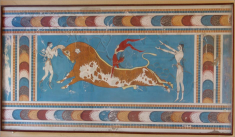Description
Quantum Chromodynamics (QCD) predicts that at sufficiently high-temperature (T) and/or baryon chemical potential ($\mu_{B}$), normal nuclear matter converts into a de-confined state of quarks and gluons, known as Quark-Gluon Plasma (QGP). A hot and dense medium of quarks and gluons is created in relativistic heavy-ion collisions. The dynamics and collective behavior of such strongly interacting medium have been extensively studied by measuring azimuthal anisotropy of the produced particles defined by the Fourier coefficients relative to the reaction plane. The mass ordering of elliptic flow at low $p_{T}$ region among various hadron species has been observed, which reflects the hydrodynamic evolution of the medium. Number-of-constituent-quark (NCQ) scaling at intermediate $p_{T}$ suggests the collective motion of quarks before hadronization.
In this work, we report elliptic flow measurements of inclusive and identified charged hadrons at mid-rapidity ($|y| <$ 1.0) in Au+Au collisions at $E_{lab} =$ 35 A GeV ($\sqrt{s_{NN}} \sim$ 8 GeV) using the Parton-Hadron-String-Dynamics (PHSD) model. These results are the prediction at one of the beam energy ($E_{lab} =$ 35 A GeV) for the CBM experiment at FAIR. The measurements are compared with the published results from the STAR experiment at RHIC for Au+Au collisions at $\sqrt{s_{NN}} =$ 7.7 GeV. We will present the centrality and $p_{T}$ dependence of the elliptic flow ($v_{2}$). The NCQ scaling of identified hadron $v_{2}$ in Au+Au collisions will be discussed. We will also discuss the ratio of $v_{2}$ scaled by the participant eccentricity ($\varepsilon_{2part}$) to explore partonic collectivity of the medium produced in heavy-ion collisions.
Details
Vipul Bairathi
Post-Doctoral Research Associate
Instituto de Alta Investigación, Universidad de Tarapacá,
Arica, Chile
https://www.uta.cl/
| Is this abstract from experiment? | No |
|---|---|
| Name of experiment and experimental site | NA |
| Is the speaker for that presentation defined? | Yes |
| Internet talk | Yes |
